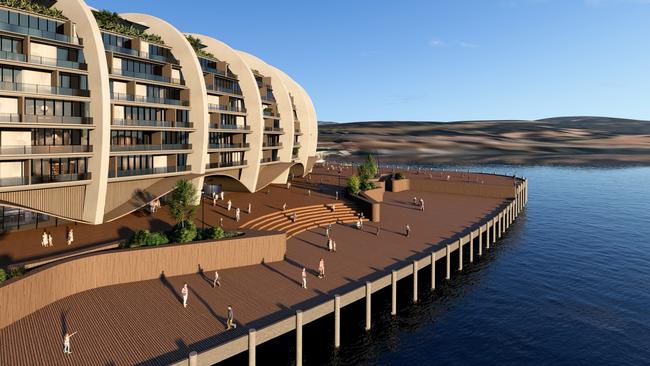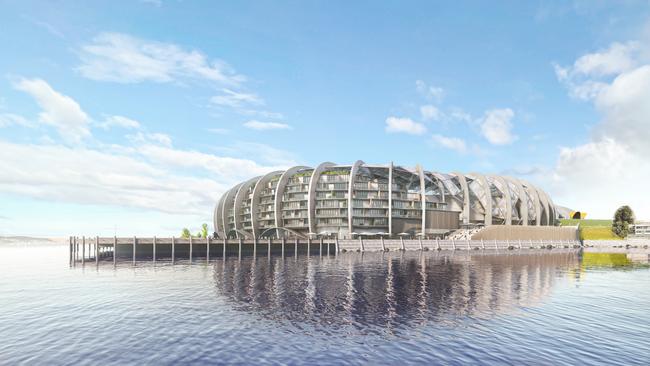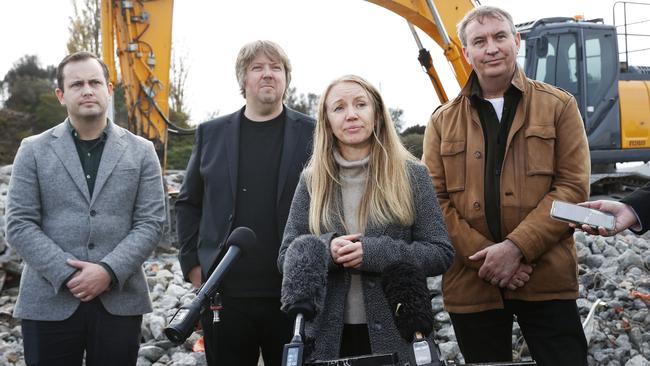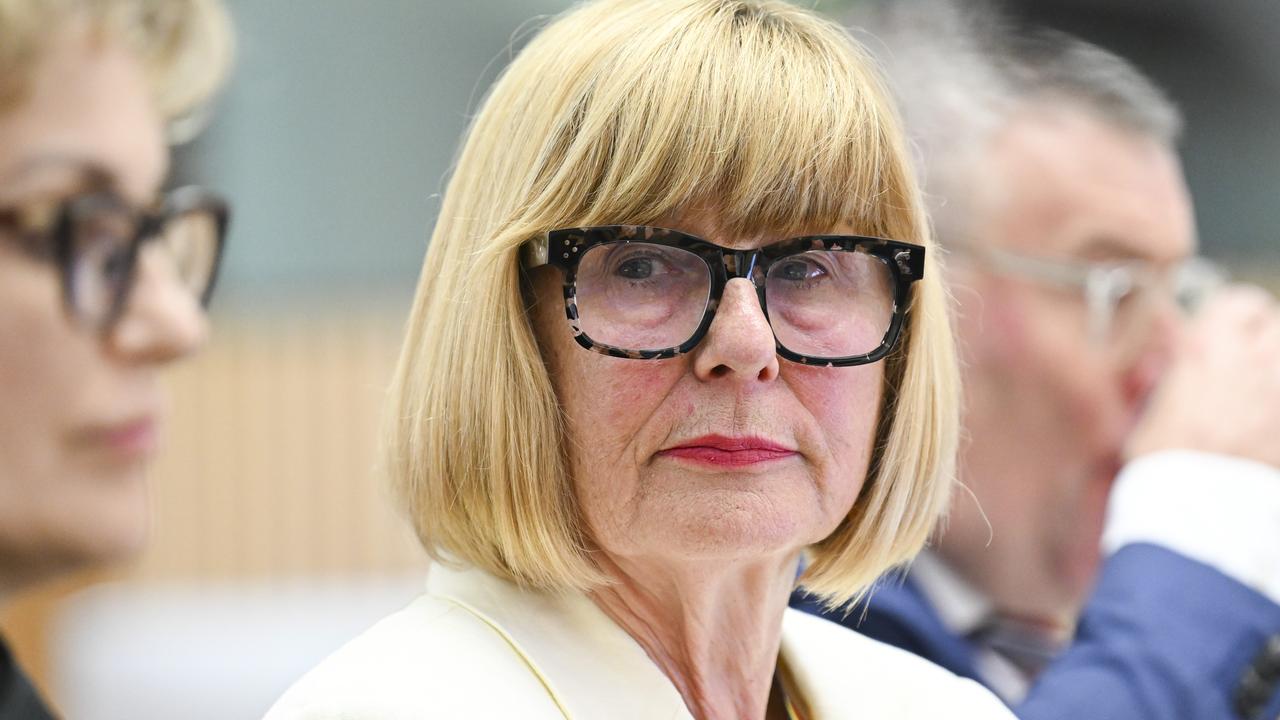Cards on the table for Mac Point 2 proponents as race for stadium development heats up
Proponents of Macquarie Point Stadium 2.0 have laid of their all their cards on the table - presenting a fully-funded $2.3bn bid to the state government.

Tasmania
Don't miss out on the headlines from Tasmania. Followed categories will be added to My News.
Proponents of Macquarie Point Stadium 2.0 have laid of their all their cards on the table by presenting a fully-funded $2.3b bid to the state government in a final push to have their innovative design accepted as the multi-purpose venue on Hobart’s waterfront.
The move comes as the government prepares to unveil concept designs for its own Mac Point 1 stadium build in the next few days, after being presented with initial renderings by Melbourne-based COX Architecture on Tuesday.
Government representatives have already shown the designs for a 28,000-seat stadium, with a polycarbonate roof, to politicians on both sides of the floor as well as some commercial stakeholders.
Tasmania Football Club, whose men’s AFL team and women’s AFLW teams will be key tenants of the venue, and AFL Tasmania, the governing body of football in the state, have also been given a virtual tour.
It is understood Macquarie Point Development Corporation met Tasmania’s biggest player in the tourism industry, Federal Hotels, on Thursday for a comprehensive show-and-tell.
Federal Group has previously voiced its doubts about the government’s stadium project, with Executive General Manager Daniel Hanna saying: “We have concerns about a stadium on Macquarie Point, incorporating a very tall structure that would be built right to the edge of the site [of a future Federal Hotels development as well as being close to its Henry Jones Hotel] adjoining Evans Street.”
It is believed that Stadia Consortia managing director Dean Coleman presented his fully costed commercially-driven Mac 2 stadium and Macquarie Point redevelopment proposal personally to the state government late last week.

In it, he revealed the backer, financial giant Capella Capital, and final designs for the stadium and surrounding area, including an innovative solution for social and affordable housing on the site to be vacated by the removal of TasWater’s waste water treatment plant.
The main point-of-difference for the Mac2 design, which is for a stadium that protrudes about 200m into the Derwent, is its wrap-around apartment concept on the eastern side, and underground carpark and heavy vehicle access on the western side.
There are also retail and restaurant spaces, a supermarket, hotel and convention centre, and private hospital built into the stadium complex.
For the Mac1 build, Cox Architecture was awarded the $37.9m design contract only eight weeks ago and has already produced plans to show the government.
As remedial work steams ahead on the Mac Point site, COX Director Alastair Richardson has made revealing observations about the project inside the development industry.

“One of the key things we want to do is to really make sure that this engages with the streetscape, that this engages with people walking around, and obviously is respectful to the Cenotaph in terms of how it sits just below the escarpment,” Mr Richardson said.
The government’s estimated $715m stadium construction cost is also a key issue, with the popular assumption that it will blow out and eventually cost more than $1bn.
Richardson is not worried about that.
“We are confident the $715m budget is perfectly appropriate for the project,” he said.
“So the aim will be that we’ll be within their budget.”
Originally published as Cards on the table for Mac Point 2 proponents as race for stadium development heats up



